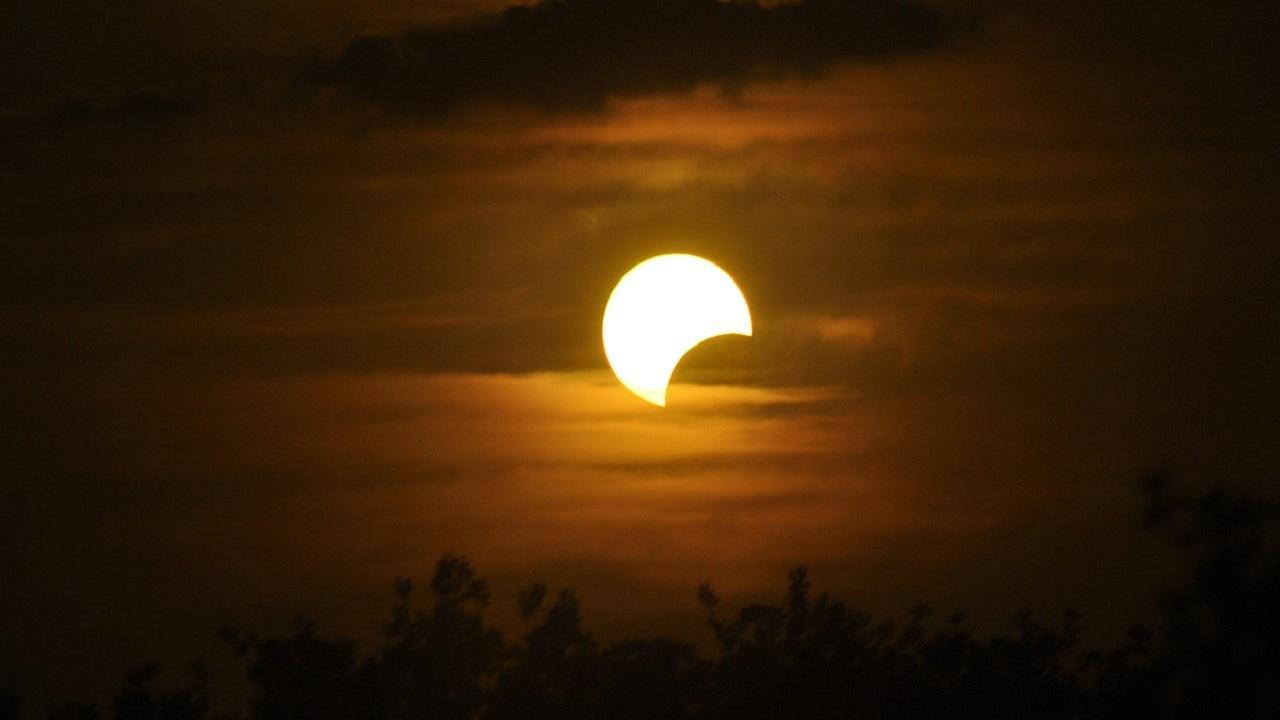An astronomical spectacle is all set to captivate skywatchers as a total solar eclipse is set to grace the skies across North America, turning day into night, on April 8

Representational Image. Pic/Pixabay
In the cosmic theater of celestial events, few occurrences captivate the human imagination quite like a solar eclipse. These captivating phenomena have mystified cultures throughout history, often regarded as omens or signs of divine intervention. Scientifically, solar eclipses result from the alignment of the Earth, Moon, and Sun, casting shadows upon our planet. However, not all solar eclipses are created equal. They manifest in different forms, each offering unique spectacles for observers on Earth.
An astronomical spectacle is all set to captivate skywatchers as a total solar eclipse is set to grace the skies across North America, turning day into night, on April 8.
ADVERTISEMENT
The total solar eclipse of 2024 will occur on April 8. The total darkening of the sky, also known as totality, will be visible across a 185-kilometre stretch between Mexico, the US, and Canada. As many as 18 different US States will also get to see it. However, it won't be visible to skywatchers in India.
According to the Indian Standard Time (IST), the total solar eclipse will begin at 9:12 pm on April 8, totality will start at 10:08 pm, and will end on April 9, 2024, at 2:22 am. The Pacific coast of Mexico will experience totality first, around 11:07 am PDT, and the occurrence will leave Maine at around 1:30 pm PDT.
Let's embark on a journey through the various types of solar eclipses, unveiling the celestial drama they bring to the skies.
Solar eclipse 2024: Total Solar Eclipse
The pinnacle of solar eclipses, a total solar eclipse occurs when the Moon completely covers the Sun, casting a shadow upon the Earth. During totality, the daytime sky darkens dramatically, revealing the Sun's outer atmosphere, known as the corona, in all its glory. This ethereal sight, with its shimmering tendrils of light, leaves spectators awestruck. Total solar eclipses are relatively rare events that unfold along a narrow path on Earth's surface, drawing enthusiasts from around the globe to witness their splendor.
Solar eclipse 2024: Partial Solar Eclipse
A partial solar eclipse transpires when only a portion of the Sun is obscured by the passing Moon. This occurs when the alignment between the Earth, Moon, and Sun is not perfectly straight, resulting in the Sun appearing as a crescent or a chunk taken out of its disk. While less dramatic than a total eclipse, partial solar eclipses still offer a remarkable sight and are more common, visible from larger regions of the Earth.
Solar eclipse 2024: Annular Solar Eclipse
In an annular solar eclipse, the Moon passes directly in front of the Sun but appears smaller than the solar disk. As a consequence, a ring of sunlight encircles the dark silhouette of the Moon, creating a mesmerizing "ring of fire" effect. This phenomenon arises when the Moon is near its apogee, the farthest point from Earth in its elliptical orbit, causing it to appear smaller than usual. Annular eclipses are breathtaking displays of cosmic symmetry, captivating observers fortunate enough to witness them.
Solar eclipse 2024: Hybrid Solar Eclipse
Also known as a "annular-total eclipse," a hybrid solar eclipse is a rare and peculiar event that transitions between a total and annular eclipse along its path. The type of eclipse experienced at a particular location depends on its proximity to the path of totality. Observers within the path may witness a total eclipse, while those outside may see an annular eclipse. Hybrid eclipses occur due to the curvature of the Earth's surface and the geometry of the Moon's shadow.
Each type of solar eclipse offers a unique spectacle, showcasing the intricate dance of celestial bodies and the wonders of our universe. Whether it's the awe-inspiring beauty of a total eclipse, the captivating ring of fire in an annular eclipse, or the subtle crescent shape of a partial eclipse, these celestial events remind us of our place in the cosmos. As we continue to study and marvel at these phenomena, solar eclipses serve as poignant reminders of the grandeur and mystery that surround us in the vast expanse of space.
 Subscribe today by clicking the link and stay updated with the latest news!" Click here!
Subscribe today by clicking the link and stay updated with the latest news!" Click here!








